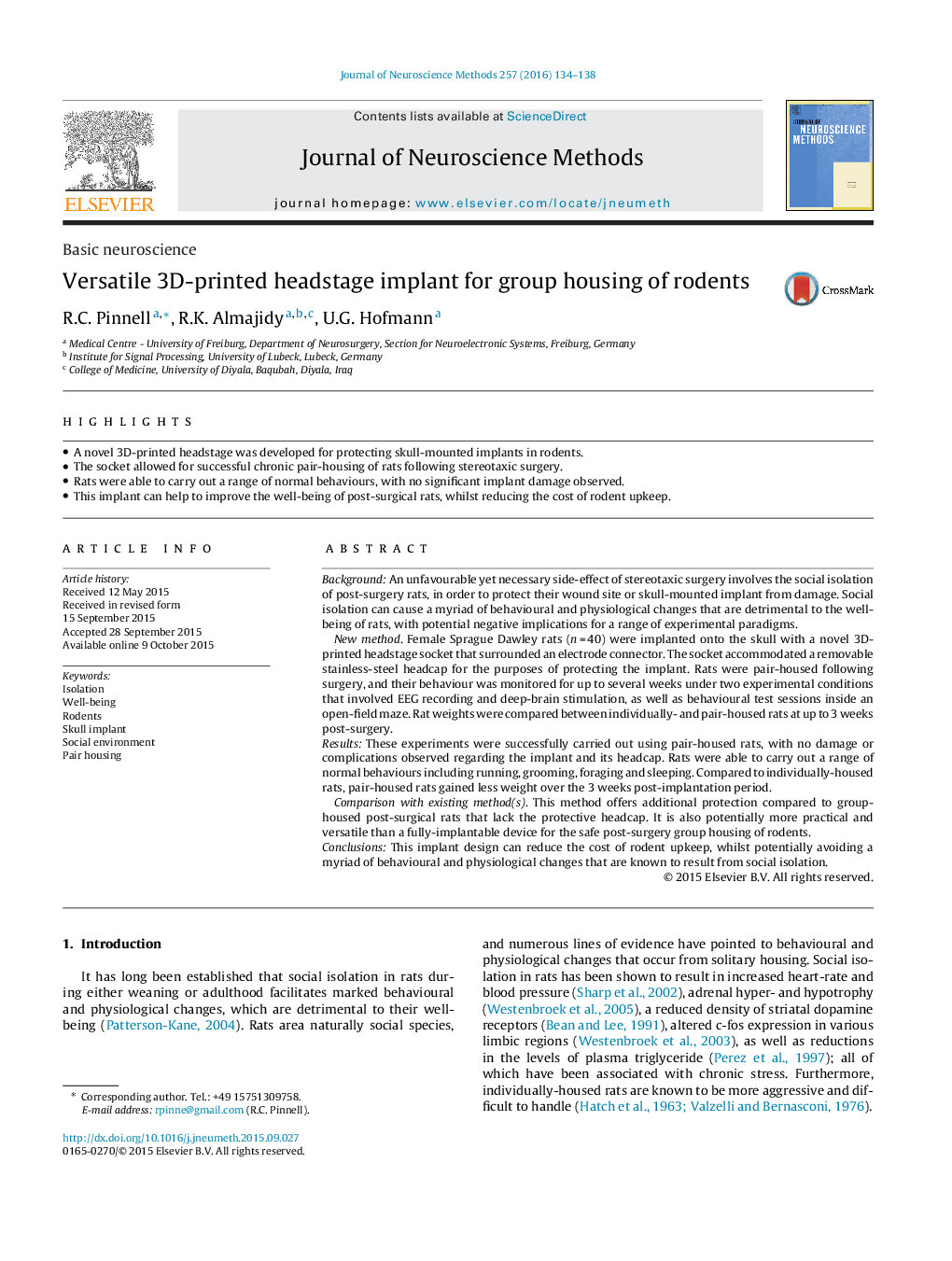| کد مقاله | کد نشریه | سال انتشار | مقاله انگلیسی | نسخه تمام متن |
|---|---|---|---|---|
| 6268094 | 1614612 | 2016 | 5 صفحه PDF | دانلود رایگان |
- A novel 3D-printed headstage was developed for protecting skull-mounted implants in rodents.
- The socket allowed for successful chronic pair-housing of rats following stereotaxic surgery.
- Rats were able to carry out a range of normal behaviours, with no significant implant damage observed.
- This implant can help to improve the well-being of post-surgical rats, whilst reducing the cost of rodent upkeep.
BackgroundAn unfavourable yet necessary side-effect of stereotaxic surgery involves the social isolation of post-surgery rats, in order to protect their wound site or skull-mounted implant from damage. Social isolation can cause a myriad of behavioural and physiological changes that are detrimental to the well-being of rats, with potential negative implications for a range of experimental paradigms.New method. Female Sprague Dawley rats (n = 40) were implanted onto the skull with a novel 3D-printed headstage socket that surrounded an electrode connector. The socket accommodated a removable stainless-steel headcap for the purposes of protecting the implant. Rats were pair-housed following surgery, and their behaviour was monitored for up to several weeks under two experimental conditions that involved EEG recording and deep-brain stimulation, as well as behavioural test sessions inside an open-field maze. Rat weights were compared between individually- and pair-housed rats at up to 3 weeks post-surgery.ResultsThese experiments were successfully carried out using pair-housed rats, with no damage or complications observed regarding the implant and its headcap. Rats were able to carry out a range of normal behaviours including running, grooming, foraging and sleeping. Compared to individually-housed rats, pair-housed rats gained less weight over the 3 weeks post-implantation period.Comparison with existing method(s). This method offers additional protection compared to group-housed post-surgical rats that lack the protective headcap. It is also potentially more practical and versatile than a fully-implantable device for the safe post-surgery group housing of rodents.ConclusionsThis implant design can reduce the cost of rodent upkeep, whilst potentially avoiding a myriad of behavioural and physiological changes that are known to result from social isolation.
Journal: Journal of Neuroscience Methods - Volume 257, 15 January 2016, Pages 134-138
